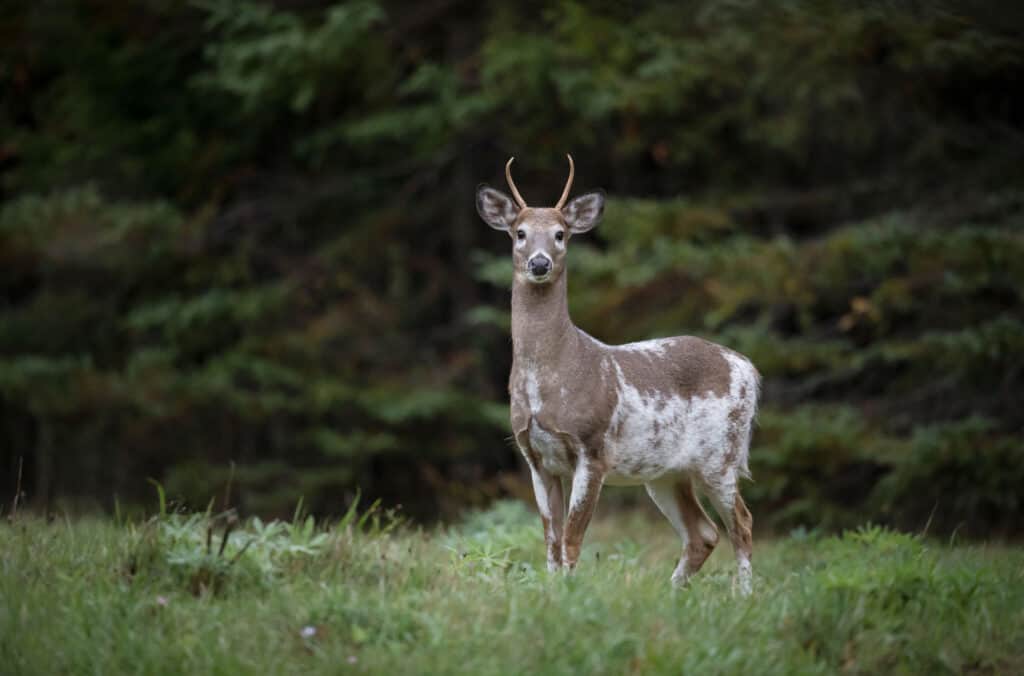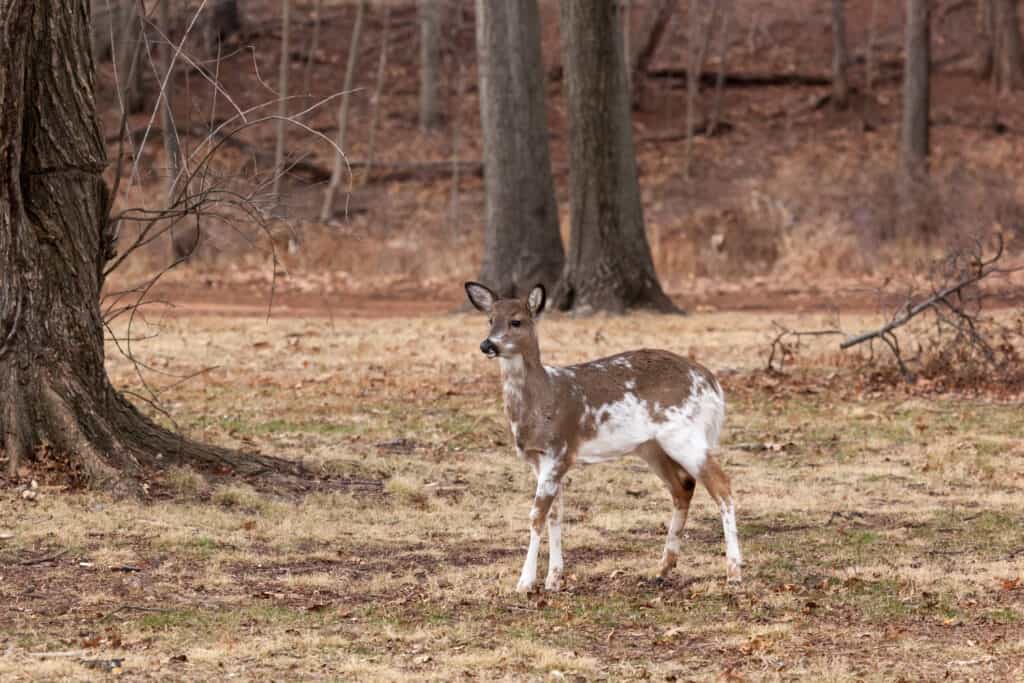Check out the Video Below to see the Rare Deer!
Our short story begins with what seems to be a Dalmatian (dog) playing in a thicket – sniffing around or trying to find a stick to fetch. However, the narrator shortly reveals the exciting news – it is actually a deer, white with brown spots!
As you’ve probably guessed, this occurrence is not something common. It is, to say the least, out of the ordinary!
The deer seems to be grazing behind a dense line of trees but soon goes out of sight. Before vanishing behind the trees, we see that it is joined by a partner – an all-gray deer. Then, after a short exploration session behind some large shrubs, the white deer returns to sight in an open field.
We can now see that it’s technically not a Dalmatian deer, as it has brown and no dark spots. At a glance, one might think it’s a white baby cow roaming around, but the animal’s large, pointed ears give away the fact that it is a white deer with brown spots. Nevertheless, the sight is spectacular.
The short story ends with the animal still in the frame, inspecting its surroundings and probably wondering why our narrator stopped in the middle of the road to look at it. Little did it know that, most likely, it was one in a thousand.
How Rare Is a White and Brown Deer?

Piebald deer can be seen in one out of every thousand deer.
©iStock.com/Brittany Crossman
According to statistics, white deer with brown spots, also known as piebald deer, can be seen in one out of every thousand deer. The same term is used to describe actual Dalmatian deer, namely white deer with black spots. These animals are not the same as albino deer, as the latter are also rarer – one in 30,000 deer.
You might hear people using the term “piebald” to describe albino deer as well. This is, theoretically, a mistake, even though many deer biologists make it. However, piebald deer are not the same as albino or leucistic deer.
Albino vs. Leucistic vs. Piebald – What’s the Difference?

Piebald deer are deer with white spots on a pigmented background.
©iStock.com/luvemakphoto
According to its meaning and definition, “piebald” defines animals with irregular patches of two colors, out of which one is predominant. Then, “albino” defines animals with deficient pigmentation, featuring milky skin and pink or blue iris. Last but not least, “leucistic” refers to animals that suffer from reduced pigmentation and are usually almost entirely white but retain their normally colored iris and eyes.
The photo featured at the top of this post is © Volodymyr Burdiak/Shutterstock.com
Thank you for reading! Have some feedback for us? Contact the AZ Animals editorial team.







